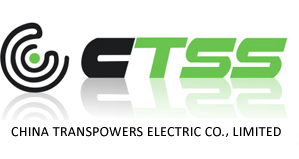Home >> News Center
ACCC-Aluminum Conductor Composite Core/Trapezoidal
2013-5-20
ACCC-Aluminum Conductor Composite Core/Trapezoidal was numerically investigated to evaluate stress distributions when subjected to thermal and mechanical loads.
The thermal analysis was conducted to simulate the cooling cycle of the rod from 250 C to room temperature.
Three types of mechanical loads were considered, namely axial tension, small bending, and large bending conditions.
This was done to predict potential mechanical failure modes, which could reduce the short term performance of the conductors.
It has been shown that the magnitudes of the residual thermal stresses in the composite core are low and insufficient to create internal mechanical
damage during manufacturing.
As expected, the axial tension analysis indicated that under extreme axial tensile loads the ACCC rod will fail catastrophically.
The most important results were obtained through the bending analysis, especially under large displacement conditions.
Under these conditions the ACCC rod will develop mechanical compressive damage in its carbon fiber/epoxy section if the rods are bent around relatively
small mandrels either during transportation or installation.
Three types of mechanical loads were considered, namely axial tension, small bending, and large bending conditions.
This was done to predict potential mechanical failure modes, which could reduce the short term performance of the conductors.
It has been shown that the magnitudes of the residual thermal stresses in the composite core are low and insufficient to create internal mechanical
damage during manufacturing.
As expected, the axial tension analysis indicated that under extreme axial tensile loads the ACCC rod will fail catastrophically.
The most important results were obtained through the bending analysis, especially under large displacement conditions.
Under these conditions the ACCC rod will develop mechanical compressive damage in its carbon fiber/epoxy section if the rods are bent around relatively
small mandrels either during transportation or installation.


 Hydro Turbine Generator Units
Hydro Turbine Generator Units
